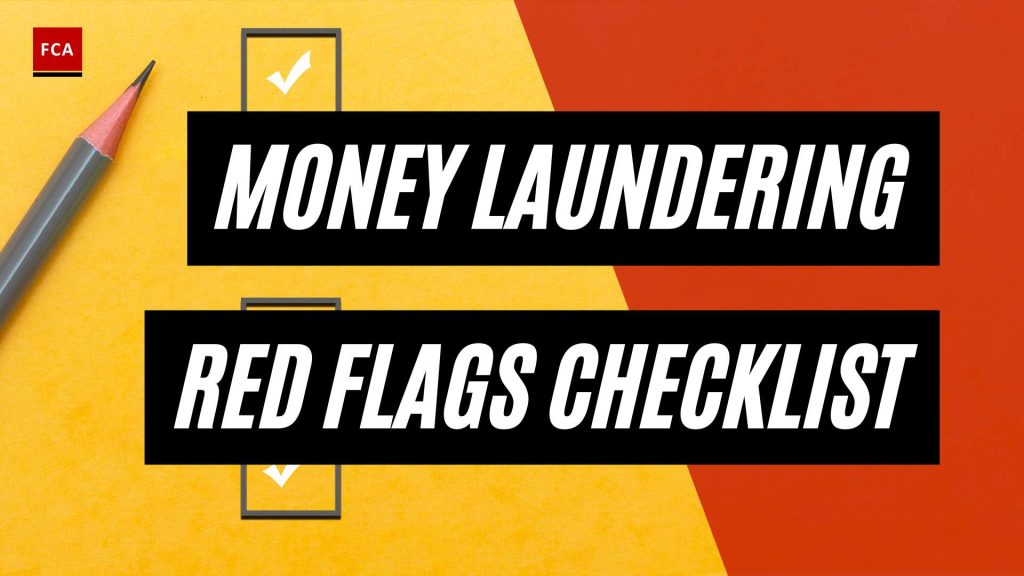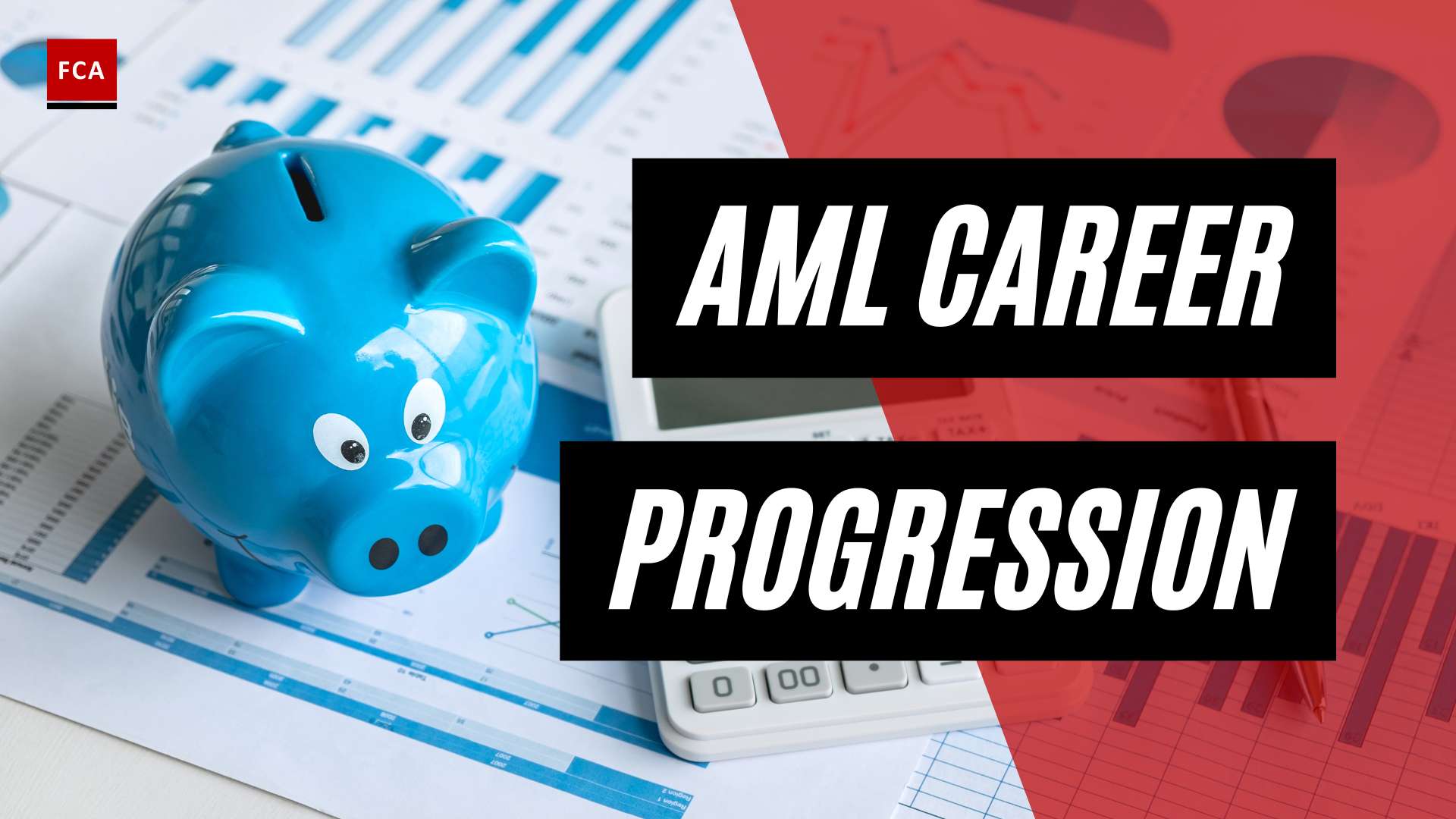Introduction to Money Laundering Schemes
Money laundering is a complex process that involves disguising the origins of illegally obtained funds, allowing criminals to use the proceeds for legal activities. By doing so, they aim to avoid suspicion and detection by authorities. Understanding the concept of money laundering is crucial for professionals working in compliance, risk management, anti-money laundering, and anti-financial crime.
What is Money Laundering?
Money laundering refers to the process of making illegally obtained money appear legitimate or “clean.” It involves a series of transactions and activities designed to obscure the audit trail of the illicit funds, making it difficult for law enforcement agencies to trace the money back to its illegal source.
The process of money laundering typically involves three stages: placement, layering, and integration. Each stage plays a significant role in the successful laundering of illicit funds.
-
Placement: In this initial stage, criminals introduce the illicit funds into the financial system. They often do this through various means, such as frequent deposits in amounts under the radar of mandatory cash reporting (Investopedia). Shell companies are commonly used to facilitate the placement of funds. These companies act as a front, making it difficult to trace the money back to its criminal origin.
-
Layering: Once the funds have been placed in the financial system, the next stage involves layering. In this stage, complex layers of financial transactions are created to obscure the origins of the money. Criminals use techniques such as international movement of funds, exploitation of legislative loopholes, and delays in cooperation to complicate the audit trail (Money Laundering). Shell companies continue to play a pivotal role in this stage, allowing for the separation of illicit money from its source.
-
Integration: The final stage of money laundering is integration. In this stage, the “cleaned” money is reintroduced into the legitimate economy through seemingly legitimate business activities or asset purchases made by shell companies. Criminals may invest the laundered money in real estate, artwork, jewelry, or other high-end assets, allowing them to enjoy their illegal profits without drawing attention (Money Laundering).
Understanding the three stages of money laundering is essential for identifying and preventing illicit financial activities. By recognizing the red flags and indicators associated with money laundering schemes, professionals can implement effective measures to combat this illegal practice. In the following sections, we will explore these red flags and indicators in detail. For more information on red flags specific to financial transactions, customers, third-party payments, and geographic locations, refer to our comprehensive money laundering red flags checklist.
Red Flags and Indicators of Money Laundering
To effectively combat money laundering, it is crucial to be aware of the red flags and indicators that may signal illicit activities. By recognizing these signs, professionals working in compliance, risk management, anti-money laundering, and anti-financial crime can take appropriate action to mitigate the risks. Here are some key red flags to watch out for:
High-Risk Industries and Customers
Certain industries and customer profiles are more susceptible to money laundering and terrorist financing activities. Financial institutions, such as banks, currency exchange houses, check cashing facilities, and payment processing companies, are particularly at risk due to their involvement in monetary transactions and fund transfers. Other high-risk industries include real estate, car dealerships, boat sales, and businesses with branches in high-risk countries.
Customers who exhibit certain behaviors or characteristics should also raise concerns. Reluctance to provide information, complex ownership structures, primarily using cash for transactions, involvement in real estate deals with unclear cash sources, or connections to politically exposed persons (PEPs) are all potential red flags.
High-Risk Products and Services
Certain products and services can be more vulnerable to money laundering and terrorist financing. These include high-volume electronic payments, online account opening, remote mobile deposits, or the sales of expensive assets like cars, boats, planes, and real estate. The nature of these transactions and the potential for large sums of money being moved make them attractive to criminals seeking to launder illicit funds.
High-Risk Geographic Locations
Geographic locations that have been identified as high-risk by international governing bodies, such as the Financial Action Task Force (FATF), are another indicator of potential money laundering risks. These locations may have weak or inadequate anti-money laundering and counter-terrorist financing measures in place, making them attractive for illicit activities.
High-Risk Delivery Channels
Delivery channels that operate virtually or without in-person interactions pose an increased risk of money laundering and terrorist financing. Examples of high-risk delivery channels include remote banking, payment services, currency exchanges, and real estate transactions where buyers are not physically present. Criminals often exploit these channels to move funds discreetly and obscure the true source of the money.
By understanding these red flags and indicators, professionals can enhance their ability to identify potential money laundering activities and take appropriate action. It is crucial to remain vigilant and ensure that proper due diligence measures are in place to mitigate the risks associated with money laundering. For more information on specific red flags related to transactions, customers, third-party payments, and geographic locations, refer to our comprehensive money laundering red flags checklist.
Red Flags in Financial Transactions
To effectively identify potential money laundering activities, it is crucial to be aware of the red flags that may arise in financial transactions. By recognizing these indicators, professionals working in compliance, risk management, anti-money laundering, and anti-financial crime can take appropriate actions to prevent illicit activities. Here are some key red flags to watch out for:
Unexplained Wealth or Funds
The presence of unexplained wealth or funds in an organization’s account can be a significant red flag for potential money laundering activities. This may include payments from unknown sources, unusually large transactions, or inconsistent cash deposits. Any sudden influx of funds without a clear legitimate explanation should be thoroughly investigated to ensure compliance and mitigate the risk of money laundering (Tookitaki).
Shell Companies and Complex Structures
The use of shell companies, which lack physical presence, employees, or legitimate business activities, is a common tactic employed in money laundering schemes. The absence of transparency in ownership or operations raises concerns and serves as a red flag in financial transactions. Complex and unusually structured transactions that do not align with the entity’s business model or industry standards can also indicate potential money laundering activities. These transactions may involve unnecessary intermediaries, convoluted payment chains, or illogical transaction patterns. It is important to scrutinize transactions involving shell companies or those with complex structures to detect and prevent money laundering.
Suspicious Transaction Patterns
Monitoring transaction patterns is crucial in detecting potential money laundering activities. Sudden changes in a customer’s transaction patterns, such as a significant increase in transaction volume, frequency, or size without a valid explanation, can be indicative of illicit financial activities. These changes may include transactions that are inconsistent with the customer’s profile or historical behavior. A thorough analysis of transaction patterns helps identify suspicious activities and enables prompt action to mitigate the risk of money laundering (Tookitaki).
Unusually Structured Transactions
Unusually structured transactions that do not align with the entity’s business model or industry standards can be red flags for potential money laundering. These transactions may involve unnecessary intermediaries, convoluted payment chains, or illogical transaction patterns. Such transactions are designed to obscure the origin or destination of funds, making it difficult to trace the source of money. Identifying and investigating these transactions is crucial in combating money laundering (Tookitaki).
By being attentive to these red flags, professionals can enhance their ability to detect and prevent money laundering activities. It is essential to have robust systems and processes in place to monitor financial transactions and promptly respond to any suspicious activity. Implementing comprehensive training programs and staying up to date with evolving money laundering techniques and trends is crucial to maintaining effective anti-money laundering measures.
Money Laundering Red Flags Checklist
To effectively combat money laundering, it is essential to be vigilant and recognize the red flags associated with illicit financial activities. The following checklist outlines various red flags related to transactions, customers, third-party payments, and geographic locations.
Red Flags Related to Transactions
-
Unusual Transaction Patterns: Look out for transactions that deviate significantly from the customer’s normal behavior or industry standards. This includes frequent large cash deposits, structuring transactions to avoid reporting requirements, or transactions involving complex financial arrangements with no apparent economic purpose. (Alessa)
-
Use of Shell Companies and Complex Structures: Be cautious of transactions that involve the use of shell companies, offshore entities, or complex structures that serve no legitimate business purpose. These arrangements may be employed to obscure the true origin of funds or to create layers of complexity to hinder detection. (Alessa)
-
Suspicious Transaction Amounts: Pay attention to transactions involving unusually large amounts of money, especially if they are inconsistent with the customer’s profile or normal business practices. This can include transactions that are just below reporting thresholds or those involving round figures or repetitive amounts. (FinCEN)
-
Unusually Structured Transactions: Look for transactions that are deliberately structured to avoid reporting requirements, such as multiple smaller transactions conducted within a short period of time. This technique, known as structuring or smurfing, aims to evade detection by keeping individual transactions below the reporting threshold. (FIU Belize)
Red Flags Related to Customers
-
False or Suspicious Identification: Be cautious when customers provide false or suspicious identification documents, or when they are reluctant to provide identifying information. Inconsistent information or efforts to avoid personal contact may also raise suspicions. (Alessa)
-
Lack of Concern for Risks or Transaction Costs: Keep an eye out for customers who display a lack of concern for risks associated with their transactions or who do not seem bothered by high transaction costs. This may indicate an attempt to quickly move funds without scrutiny. (FinCEN)
-
Unusual Customer Behavior: Look for customers who exhibit unusual concern for privacy, express a desire to avoid personal contact, or engage in transactions that are inconsistent with their former business practices. These behaviors may suggest an attempt to conceal the true nature of their activities. (FinCEN)
Red Flags Related to Third-Party Payments
-
Unclear Origin of Funds: Be cautious of transactions that involve third-party payments where the origin of funds is unclear or uncertain. This includes transactions where the source of funds is unrelated to the customer or where the purpose of the payment is unclear. (Alessa)
-
Involvement of Intermediaries: Take note of transactions that unnecessarily involve intermediaries, especially when their role and purpose in the transaction are unclear. The use of intermediaries can increase opacity and anonymity, making it harder to detect money laundering activities. (FIU Belize)
Red Flags Related to Geographic Locations
-
High-Risk Countries: Exercise caution when dealing with transactions involving countries identified as high risk for money laundering or those subject to international sanctions. This includes countries with weak anti-money laundering controls, high levels of corruption, or involvement in illicit activities. (FinCEN)
-
Lack of Business in a Particular Area: Be alert to transactions that have no apparent business purpose in a specific geographic location. This may include transactions involving jurisdictions where the customer has no known business activities or connections. (FinCEN)
It is important to note that the presence of these red flags does not necessarily indicate money laundering on its own. However, when multiple red flags are present or when they are combined with other suspicious indicators, further investigation is warranted. By remaining diligent and utilizing this checklist, professionals in compliance, risk management, and anti-money laundering can help identify and prevent potential money laundering activities.
Emerging Trends and Techniques in Money Laundering
As the fight against money laundering continues, it’s crucial to stay informed about the emerging trends and techniques that criminals employ. Understanding these tactics can help professionals working in compliance, risk management, anti-money laundering, and anti-financial crime to effectively detect and prevent illicit activities. In this section, we will explore three key aspects: smurfing and layering techniques, the role of shell companies in money laundering, and money laundering in high-risk industries.
Smurfing and Layering Techniques
Smurfing is a money laundering technique that involves the use of multiple individuals, also known as “smurfs,” who exchange illicit funds for items such as traveler’s checks, bank drafts, or savings accounts. This technique is particularly effective in the placement stage of money laundering, allowing criminals to place large sums of cash into financial institutions within a short period of time (Money Laundering).
Layering, on the other hand, occurs in the second stage of money laundering. It involves converting the illicit funds into a different form and creating complex layers of financial transactions to obscure the trail. Shell companies play a pivotal role in the layering process, as they enable criminals to easily move funds across multiple jurisdictions with weak anti-money laundering regulations or strong bank secrecy laws (FlagRight).
Role of Shell Companies in Money Laundering
Shell companies, often used in all stages of money laundering, are entities that exist primarily on paper and conceal the beneficial ownership of assets. They offer anonymity and asset concealment, making them attractive for individuals and corporations seeking to protect their assets, evade obligations, maintain privacy, or engage in illegal activities. Shell companies can create multiple layers of ownership, use nominee directors and shareholders, and spread across jurisdictions with weak regulations, making it difficult to trace the true owners (FlagRight).
These companies are particularly useful in the placement and layering stages of money laundering. They facilitate the movement of illicit funds, create complex financial structures, and obscure the origins of the funds. Regulators and financial institutions need to be vigilant in identifying the red flags associated with shell companies to combat money laundering effectively.
Money Laundering in High-Risk Industries
Money laundering has historically been prevalent in high-risk industries, such as casinos, real estate, and financial services. These industries provide opportunities for criminals to convert illicit funds into legitimate assets. Recognizing the red flags associated with these industries is crucial for effective detection and prevention.
In casinos, large transactions involving cash are a common red flag. Criminals may attempt to convert their illicit funds into chips or use the casino as a venue to “clean” their money. Real estate transactions without a mortgage or formal financing are often indicative of potential money laundering activities. Criminals may use real estate to invest their illicit funds, aiming to legitimize their assets. Financial services, including money remittance and virtual currencies, also present vulnerabilities for money laundering.
By understanding the specific red flags associated with high-risk industries, professionals can enhance their ability to detect and report suspicious activities, ultimately contributing to the overall efforts in combating money laundering (Investopedia).
Being aware of these emerging trends and techniques is crucial for professionals involved in combating money laundering. By staying informed and regularly updating risk assessments and monitoring procedures, organizations can effectively mitigate the risks associated with these money laundering tactics.
Regulatory Framework and Reporting Obligations
In the fight against money laundering, a robust regulatory framework and reporting obligations are essential. Financial industry regulations, international anti-money laundering frameworks, and the obligation to report suspicious activity play key roles in combating illicit financial activities.
Financial Industry Regulations
Financial industry regulations serve as a foundation for anti-money laundering efforts. These regulations are put in place to prevent the misuse of the financial system for money laundering purposes. In the European Union, the first anti-money laundering Directive was introduced in 1990, with subsequent updates to strengthen the measures (Sanction Scanner).
In the United States, the Bank Secrecy Act (BSA) was established in 1970 and has since undergone continual updates and strengthening. The Financial Crimes Enforcement Network (FinCEN) is responsible for the administration of the BSA, ensuring compliance with anti-money laundering measures (Sanction Scanner).
Financial institutions are subject to regulatory bodies that require them to conduct due diligence and implement measures to prevent money laundering. This includes checking transaction parties against lists of sanctioned individuals, companies, institutions, and countries, such as those provided by the US Treasury Department, the US Office of Foreign Assets Control, the United Nations, the European Union, Her Majesty’s Treasury, and the Financial Action Task Force on Money Laundering (Sanction Scanner).
International Anti-Money Laundering Frameworks
In addition to national regulations, international anti-money laundering frameworks play a vital role in combating money laundering. These frameworks provide guidelines and standards that countries can adopt to enhance their anti-money laundering efforts. The Financial Action Task Force (FATF) is one such global organization that sets international standards and promotes the implementation of effective measures to combat money laundering and terrorist financing. Countries that are members of the FATF are expected to implement its recommendations and undergo periodic evaluations of their anti-money laundering regimes.
By adopting international frameworks and collaborating with other countries, financial institutions and regulatory bodies can strengthen their defenses against money laundering and ensure global cooperation in combating illicit financial activities.
Reporting Suspicious Activity
Reporting suspicious activity is a crucial component of anti-money laundering efforts. Financial institutions and other entities subject to anti-money laundering regulations have an obligation to report any transactions or activities that raise suspicion of money laundering or terrorist financing.
Regulatory bodies, such as the Financial Industry Regulatory Authority (FINRA) in the United States, provide resources and tools for financial industry professionals to fulfill their reporting obligations. These resources include the ability to save data views, manage watchlists, access filings, run reports, and submit support tickets (FINRA).
By promptly reporting suspicious activities, financial institutions contribute to the early detection and prevention of money laundering schemes, ultimately safeguarding the integrity of the financial system.
Understanding the regulatory framework, adhering to financial industry regulations, and complying with reporting obligations are critical steps in the fight against money laundering. By staying informed and continuously updating their practices, professionals working in compliance, risk management, anti-money laundering, and anti-financial crime can effectively combat illicit financial activities and protect the integrity of the financial system.
Money Laundering Red Flags Checklist
To effectively detect and prevent money laundering, it is essential for professionals working in compliance, risk management, anti-money laundering, and anti-financial crime to be familiar with the red flags of money laundering and indicators of money laundering. By recognizing these red flags, organizations can enhance their ability to identify suspicious activities and take appropriate action. The following checklist outlines some key red flags related to transactions, customers, third-party payments, and geographic locations.
Red Flags Related to Transactions
-
Unexplained Wealth or Funds: Sudden and significant increases in funds or unexplained wealth without a legitimate source raise suspicions of money laundering. This can include unusually large deposits, frequent cash deposits, or substantial fund transfers without a clear purpose or origin.
-
Shell Companies and Complex Structures: Transactions involving shell companies with no physical presence, employees, or legitimate business activities are a major red flag. Complex ownership structures, convoluted payment chains, or illogical transaction patterns may also indicate potential money laundering.
-
Suspicious Transaction Patterns: Any unusual or atypical transaction patterns that deviate from the entity’s normal business activities should be closely examined. This can include sudden changes in transaction volume, frequency, or size without a valid explanation.
-
Unusually Structured Transactions: Transactions structured to avoid reporting thresholds or conducted in smaller amounts to evade suspicion may indicate potential money laundering. This can involve multiple transactions just below the reporting threshold or transactions designed to avoid detection.
Red Flags Related to Customers
-
High-Risk Industries and Customers: Industries such as financial institutions, real estate, car dealerships, and businesses with branches in high-risk countries are more susceptible to money laundering and terrorist financing activities. Customers associated with these industries, particularly those exhibiting high-risk behaviors (e.g., reluctance to provide information, primarily using cash, complex ownership structures), should be carefully monitored.
-
Unusual Customer Behavior: Customers who display suspicious behavior, such as frequent large cash transactions, multiple accounts with no clear purpose, or connections to politically exposed persons (PEPs), should be considered red flags for potential money laundering.
Red Flags Related to Third-Party Payments
-
Red Flags in Smurfing: Smurfing refers to splitting large cash deposits into smaller transactions to avoid suspicion. Multiple deposits made by different individuals or entities, often in smaller amounts, can indicate potential smurfing activity.
-
Red Flags in Round-Tripping: Round-tripping involves moving illicit funds through a series of transactions to disguise their origin. Transactions involving funds going back and forth between the same parties without a legitimate purpose are indicative of round-tripping and may suggest money laundering.
Red Flags Related to Geographic Locations
- High-Risk Geographic Locations: Countries or regions identified as high-risk for money laundering and terrorist financing by international governing bodies, such as the Financial Action Task Force (FATF), are important red flags. Financial transactions involving these locations should be subject to enhanced scrutiny.
By incorporating this money laundering red flags checklist into their compliance and risk management processes, organizations can enhance their ability to identify potential money laundering activities and take appropriate measures to mitigate risks. It is crucial to stay updated on emerging trends and techniques in money laundering to effectively combat this illicit activity.









